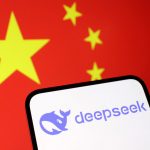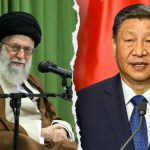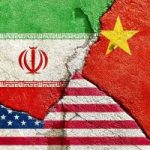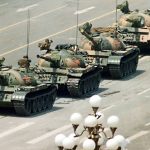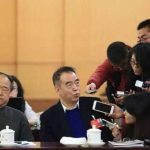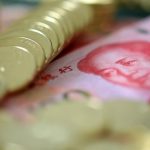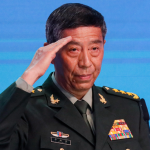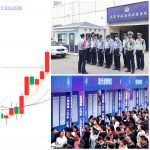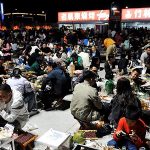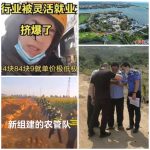BY BRADLEY A. THAYER AND LIANCHAO HAN
During the Korean War, the U.S. military under United Nations command engaged in a 42-day battle, Operation Showdown, against the People’s Liberation Army (PLA) to capture a forested ridge called Triangle Hill — Shangganling in Chinese. The U.S. terminated the operation because of high casualties, and since then the Chinese have propagandized it as a great victory over the United States. Largely forgotten by the West, it is framed by the Chinese Communist Party (CCP) as the iconic symbol of defeating its arch enemy through great sacrifice, focus and determination.
At the party’s Fifth Plenum last month, Chinese leader Xi Jinping revealed a plan for a “new Battle of Triangle Hill.” This battle is about technology, not terrain. China possesses the same determination and focus as it did 70 years ago, to realize its aim of seizing the commanding heights of science and technology from the United States. For the first time in the CCP’s history, this objective is included in the 14th Five-Year Plan. The plan requires that China focus on technological innovation as a core component in all of the country’s modernization. It also compels China to make technological self-sufficiency a strategic pillar of national development. Notably, this receives priority over all other planned missions.
Wang Zhigang, Chinese minister of science and technology, and the Chinese official media hail the bid for technological supremacy as Xi’s most critical strategic decision. Xi has masterfully placed China on the path to full economic development, and he intends to achieve the “second centenary goal” — that by 2049, the centenary of the founding of the People’s Republic of China, the country will become “a great modern socialist power.” In other words, China will become the world’s dominant state.
There is nothing new about the Olympian ambition of the CCP. Since Mao Zedong, China’s leaders have known that to achieve this goal, China must catch up with and then surpass the U.S. in science and technology. Even more than his predecessors, Xi has elevated this objective to the highest strategic level. In the next 15 years, Xi intends to complete China’s full modernization, and then to secure world domination in another 15 years.
These major efforts are Beijing’s response to the trade war initiated by President Trump to arrest China’s theft of American intellectual property and stop other unfair trade practices. The CCP perceives the trade war as a critical move by the United States to deny it access to cutting-edge technologies because the CCP believes the U.S. is about to lose the competition in this area. For the CCP, the real goal of the trade war is America’s attempt to prevent or delay China’s inevitable victory.
In 2018, Xi told his scientists and engineers that specific and key technologies are the pillars of a great power, and that China has the opportunity to seize technological leadership. To do so, they must make breakthroughs in “key areas and stranglehold problems” as early as possible, to ensure that China becomes “the major world center for science and commanding height for innovation.” Xi called on them to be “deeply involved in the global governance in science and technology, offer Chinese wisdom, and make greater efforts to promote the building of a community with a shared future for humanity.” (References to “a shared future for humanity” should be understood as a euphemism for China’s hegemonic ambition.)
In September 2020, Xi hosted a symposium attended by scientists in Beijing and laid out his plan. Technological innovation is the primary driving force to make China a technology superpower and achieve national rejuvenation, which was formalized in the Fifth Plenum. Next year’s People’s Congress will provide a more detailed roadmap.
For American national security, the central question is how does China’s technology-centric strategy, with its focus on acquiring key technologies such as “chokehold technologies,” affect America’s overall policy of confronting China. In our view, the U.S. and the free world cannot be cavalier about this threat. Americans should anticipate that the implementation of this strategy will disrupt U.S. research and development sectors, defense universities and Silicon Valley.
While it is now more difficult for China to steal America’s intellectual property, Americans must realize, first, that China will not stop trying and U.S. vulnerabilities remain. Second, China is stressing indigenous development by launching campaigns that echo the intensity of the Great Leap Forward to accelerate their pace of technological innovation. For example, China is using its formidable state resources, including money gained from trade and access to U.S. capital markets, to build science/technology megacities, national laboratories and innovation incubators such as Huairou Science City in Beijing, Shenzhen Guangming Science City and Chengdu Science City.
The goal is to attract premier scientific talent from around the world. China will buy talent, labs and companies from the U.S. to quickly obtain technologies, including chips, mask aligners and OS systems, which could drain talent from the West. China also plans to set up global science foundations to provide funding for international talent to take on its R&D projects.
As a Chinese saying goes, “When a high reward is offered, brave fellows are bound to come forward.” With campaigns to bring back Chinese scientists and engineers who were trained in the U.S., and with China’s own talent training programs, it is likely the regime will build the largest and brightest research and development workforce in the world. China’s R&D personnel have increased already from 3.76 million in 2015 to 4.8 million in 2019.
According to a recent report by China’s Global Times, ASML Holding, the Dutch company that is one of the world’s largest suppliers of photolithography systems for the semiconductor industry, has accelerated its operations in China, and Infineon Technologies, a German semiconductor manufacturer, plans to prioritize China for future development.
The U.S. and the free world must remain vigilant about China’s technological ambitions, and work together to thwart China’s attacks and ensure that the West holds its technological leadership. The West cannot lose this new battle of Triangle Hill.
This article first appeared in The Hill on 11/11/20 12:00 PM ET



